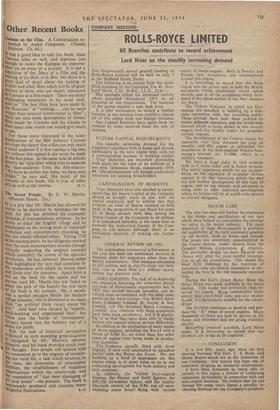is a pity that Mr. Martin has allowed his vision
to be distorted by nostalgia for the Past, for this has defeated his eminently ntudable, if over-ambitious, purpose. In his desire to place the English village and its Inhabitants in the setting both of historical evolution and contemporary planning, he has not wholly effected either. Taking 1750 as his starting point, he has diligently worked over the main contemporary sources (though virtually neglecting the original records) Which exemplify the course of the agrarian revolution. He has, however, blurred rather att highlighted the very real contrasts by Ine restlessness with which he moves back and forth over the centuries. Apart from a Pat on the back for the squire and the Parson (and Mr. Martin has not failed to select the pick of the bunch) the real hero Of the book is the yeoman. He, it seems, 'vas a perfect paragon beside the modern Village labourer, who is dismissed as no more t.111-1 "an artificial plant raised above the s011." And land once farmed by "elderly, ord-working and experienced men" has ,ollen into the hands of 'incompetent' Iarmers drawn into the industry out of a desire for profit.
Still, the lack of histbrical perspective !videnced in such sweeping generalisations


































 Previous page
Previous page